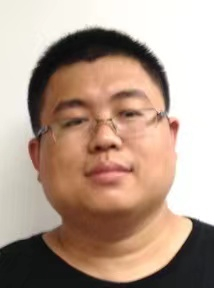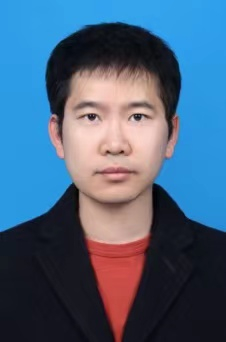人工智能作为一个数学、算法理论和工程实践相结合的领域,诸多研究课题往往基于数学模型与学习方法。近年来,以深度学习为代表的人工智能算法研究多基于工程经验设计深度网络,往往忽视了应用问题的数学基础。本次论坛将结合图像复原、脑机交互等典型人工智能应用,探讨以数学模型为基础的深度网络结构设计与学习方法,以期加强数学与人工智能研究的深度融合。
论坛时间
2021年10月15日(星期五)14:00-17:00
特邀讲者
郭志昌 副教授、李爻 博士、任冬伟 副教授
论坛地点
一校区活动中心 216
主持人
左旺孟 教授、武小荷 博士
论坛安排:
14:00-14:10
计算学部主任 刘挺 教授致辞
数学学院院长 吴勃英 教授致辞
14:10-14:50
1. 报告一题目: Deep Learning Informed PDE Model for Image Denoising
报告摘要:Image denoising is one of the fundamental problems in image processing. Nowadays the convolutional neural network (CNN) based denoising approaches have achieved better performance than traditional methods, such as PM, STROLLR, BM3D, etc. However, CNN can easily bring unexplainable artifacts to denoised images. In this paper, we propose a deep learning informed PDE (DLI-PDE) framework utilizing the image prior or the image gradient prior for image denoising. The image prior and the gradient prior are learned from CNN models and used as the coefficient of diffusion equations. The solution of DLI-PDE is infinitely smooth from the uniqueness of existence theory, which guarantees that the denoised image has no artifact. Good properties of DLI-PDE also ensures high-quality of denoising. Experimental results show that our proposed two methods provide higher quality denoising performance than traditional algorithms including PM, STROLLR, BM3D. Moreover, DLI-PDE achieves comparable performance to the modern CNN-based denoising mode, i.e. , WNNM, TNRD, DnCNN.

讲者简介:郭志昌,男,1982年07月出生,准聘副教授,哈尔滨工业大学数学学院计算数学系副主任,中国生物医学工程学会医学人工智能分会青年委员,主要从事偏微分方程图像处理和深度学习等方面的研究。在图像去噪、图像恢复、图像分割、图像压缩等问题有一系列原创成果。已发表论文20余篇,在SIAM Journal on Imaging Sciences,Journal of Nonlinear Science,Neurocomputing,IEEE Transactions on Image Processing等高水平期刊上有一系列研究成果。主持国家自然科学基金面上基金1项,主持国家青年基金1项,作为主要参与人参与面上基金2项,国家自然科学基金联合基金1项,主持省基金1项,主持博士后新教师基金1项,主持博士后面上基金1项。现阶段主要研究方向为,分数阶方程的数值理论和在图像恢复中的建模,深度学习卷积神经网络的部分解释,基于PDE和深度学习卷积神经网络的融合模型。
14:50-15:30
2. 报告二题目:Convolutional Correlation Analysis for Enhancing the Performance of SSVEP-Based Brain-Computer Interface
报告摘要:Currently, most of the high-performance models for frequency recognition of steady-state visual evoked potentials (SSVEPs) are linear. However, SSVEPs collected from different channels can have non-linear relationship among each other. Linearly combining electroencephalogram (EEG) from multiple channels is not the most accurate solution in SSVEPs classification. To further improve the performance of SSVEP-based brain-computer interface (BCI), we propose a convolutional neural network-based non-linear model, i.e. convolutional correlation analysis (Conv-CA). Different from pure deep learning models, Conv-CA use convolutional neural networks (CNNs) at the top of a self-defined correlation layer. The CNNs function on how to transform multiple channel EEGs into a single EEG signal. The correlation layer calculates the correlation coefficients between the transformed single EEG signal and reference signals. The CNNs provide non-linear operations to combine EEGs in different channels and different time. And the correlation layer constrains the fitting space of the deep learning model. A comparison study between the proposed Conv-CA method and the task-related component analysis (TRCA) based methods is conducted. Both methods are validated on a 40-class SSVEP benchmark dataset recorded from 35 subjects. The study verifies that the Conv-CA method significantly outperforms the TRCA-based methods. Moreover, Conv-CA has good explainability since its inputs of the correlation layer can be analyzed for visualizing what the model learnt from the data. Conv-CA is a non-linear extension of spatial filters. Its CNN structures can be further explored and tuned for reaching a better performance. The structure of combining neural networks and unsupervised features has the potential to be applied to the classification of other signals.

讲者简介:李爻,男,1990年,博士后,哈尔滨工业大学数学学院计算数学系。博士毕业于伊利诺伊大学香槟-厄巴纳分校,后于美国塔吉特公司任职人工智能科学家。主要从事脑机接口和深度学习等方面的研究,现阶段主要研究方向为学习理论。
15:30-15:50 茶歇
15:50-16:30
3. 报告三题目:图像复原中反问题的深度学习方案
报告摘要:针对图像去噪、超分辨、去模糊等典型底层计算机视觉任务,当前深度学习方法多关注于设计深度网络结构,以直接学习低质量图像到高质量图像的映射。作为典型的反问题,基于深度学习的图像复原方法研究与反问题的数学模型和优化算法密不可分。本次报告将首先针对图像非盲复原问题介绍图像去噪、去模糊和超分辨等的深度复原网络,然后进一步针对图像盲复原问题介绍自监督学习的图像去模糊方案。

讲者简介:任冬伟,哈尔滨工业大学计算学部副教授、博士生导师。主要研究方向为计算机视觉,包括图像复原与增强、目标检测与分割等,发表论文二十余篇,多数发表在国际顶级会议CVPR/ICCV/ECCV/AAAI以及IEEE T-PAMI/IEEE T-IP/IEEE T-CYB等国际权威期刊。主持国家自然科学基金面上项目和青年项目。
16:30-17:00 Panel讨论
主题:人工智能中的数学理论与方法
主办方
哈工大计算学部
承办方
哈工大计算学部机器学习研究中心
黑龙江省人工智能头雁团队
黑龙江省视听觉认知重点实验室
仲荣论坛介绍
哈工大是我国最早开展人工智能研究的高校之一。1958年,哈工大计算机专业师生研制成功中国第一台能说话、会下棋数字计算机,时任国家副总理的邓小平同志到哈工大参观了这台计算机,在全国引起强烈反响,被誉为中国人工智能的起点。20世纪80年代初,哈工大计算机专业以李仲荣教授为首,开展了声图文计算机智能接口、语音信号处理、文字识别、机器人足球、机器学习、汉英机器翻译等方面的研究工作,为哈工大在相关领域的发展和领先地位奠定了基础。
在随后的几十年内,哈工大涌现出一大批扎根东北、爱国奉献、造诣精深、勇于拼搏的高水平人工智能领军人才,现有教师队伍中有国家级人才4名,国家重点研发计划首席科学家2名,国家级青年人才6名。已研制出中国手语识别与合成、高效图像编码理论、AVS高效数字视频编解码技术、微软拼音输入法、中文语言技术平台LTP、中文知识图谱“大词林”等一大批标志性成果,获得国家科技奖4项。培养出了高文、张大鹏、徐雷、周明、陈熙霖、王海峰、吴枫等一大批杰出校友。据第三方统计,哈工大培养的人工智能人才的数量全国第一。根据2019年6月21日中国工程院中国新一代人工智能发展战略研究院发布的人工智能专业综合排名,哈工大排名第4。
为打造世界一流的计算学科群,哈工大于2020年6月百年校庆之际组建了计算学部。2021年5月20日,学部决定组织“哈工大计算学部人工智能学科发展系列论坛”(简称“仲荣论坛”,以哈工大人工智能领域的奠基人李仲荣先生的名字命名)。由江俊君教授担任论坛主席,车万翔教授、刘贤明教授担任副主席。每期论坛选定不同主席,由学部内不同教授担任执行主席。论坛将以AI核心技术和AI+X交叉方向的技术热点和人才培养为话题,以凝聚学部内AI核心力量,厚培其根,根深才能叶茂;进而扎扎实实地推动学部内AI与计算学科群其他方向的交叉融合;同时与校内外其他学科的优秀学者合作深度交流与合作,共同推进AI+X学科的发展。



